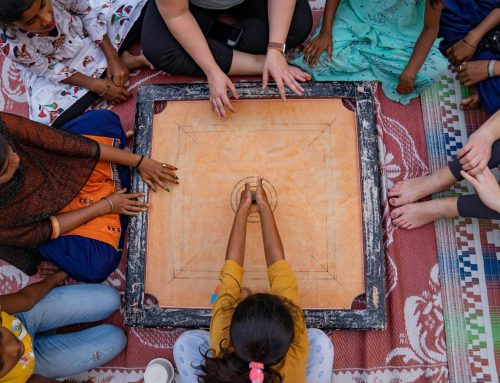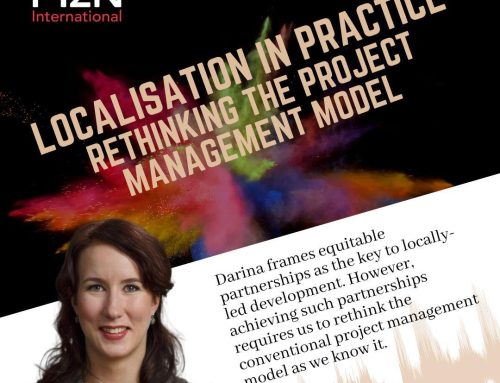We now have less than 10 years to keep humanity’s promise to itself yet achieving the Sustainable Development Goals by 2030 still seems distant and elusive.
Many of my friends and colleagues leading their own agency, NGO or social enterprise started this year with the nagging question: “How do I prepare my organization for a chaotic but crucial decade, especially at a time when I spend most of my days ‘putting out fires’ and struggling to secure funding for just one more year?”
Getting an answer to this critical question is difficult. We all clearly understand that in these increasingly unsure times there is absolutely no guarantee of future success or, for that matter, even survival.
However, there are some techniques and sensible changes that we might apply to dramatically defuse some of the unseen perils and challenges arising from this uncertainty. Let’s first take a look at what we are facing in the run-up to the SDGs’ 2030 end date.
What To Expect by 2030
Funding: Well, it’s political
The funding landscape will likely be more volatile than ever, as political support for development assistance is not assured. Institutional donors face funding reductions or reallocations toward climate change, social cohesion, and curbing migration.
US President Donald Trump has already submitted multiple annual budget proposals that would drastically slash foreign aid. Even though Congress has thus far managed to push back against these deep cuts, the days of unwavering support for international solidarity may be over.
Migration focus
Migration has always been high on the political agenda and is certain to have an impact on how a government spends its foreign aid money. Policy shifts toward more migration-curbing measures mean greater political scrutiny of funding applications. This certainly impacts who gets funding and where, and in the future, potential applicants will need to closely monitor this coming trend.
It’s not all bad news, though. With Brexit, the EU has lost about half of its ownership contributions of the London-based European Bank for Reconstruction and Development. But in response, Brussels is certain to boost the development role of the European Investment Bank later this year. As this shift begins, fundraisers should watch the development finance space for more details.
Impact philanthropy is finally here
More good news is likely to come from increasingly impatient philanthropists. By pooling their resources and energy, they are supporting the development of larger-scale, longer-term, more innovative, more technology-driven, and more risk-taking approaches and programming. But as this pooled generosity grows and evolves, so will their demand for solid data, measurable results, and demonstrable impact.
Understandably, they will also expect sustainable results with greater accountability and scrutiny and will certainly want to be treated less as cash cows and more as development partners and co-investors.
The war for talent
Finally, the expanding role of technology and the war for talent will certainly reach the sector — if it hasn’t already. To keep the best talent and to capture and grow their creativity, energy, fervent commitment, and technology skills, organisations have to offer innovative workplace solutions that do not chain talent to crammed desks from 9 a.m. to 5 p.m.
Of course, these are just a few of the challenges and changes that we all now face. There will be many more surprises. They will affect each organization to different degrees, and it is impossible to predict in any detail how this will play out.
How do we run an agency with a stable hand through chaotic times?
In late 2019, I posed this very question to some of my friends, valued clients, CEOs, secretary-generals, and the managing directors of some 10 leading nonprofit organisations. This was their advice:
1. Invest in Innovation, Not Rules
Of course, innovation is a perennially fashionable buzzword. But despite all the buzz, many non-profit organisations actually manage innovation rather badly.
Innovation results in a more tangible impact when agencies support it properly, including dedicated and automatically assigned funding and time spaces that support disruptive innovation and continuous improvement and breakthrough. Good innovation governance can capture its full potential, moving innovation away from that one bright idea towards a cycle of renewal and fresh thinking.
My informal panel of advisers also noted that contrary to many assumptions, good procedures and governance over the process of innovation do not stifle it, but rather plant it in fertile soil.
2. Do More of What You Do Best – And Much Less of What You Don’t
Humanitarian agencies are good at saving people, while development agencies are good at securing and building futures. It’s rare that either can also manage the demands of donors’ ever-changing funding pipelines and the unpredictable shifts in their programmatic priorities.
Personally, I have yet to see any agency that runs a time-efficient and fully compliant procurement function, information technology team or knowledge service. The same can be said about many necessary operational and administrative functions that can contribute to, but are not central to, a non-profit organisation’s core mission. Effective and lasting impact comes from good project delivery. Programme leaders should therefore be ruthless in their focus on just that.
Many more routine operational, administrative, financial, and logistical functions are a significant part of programme leaders’ time, distracting them from what their focus should be: delivering the project or programme.
Many such distractions can and should be outsourced through trusted, specialised partners. For example, it is possible to completely outsource finance, human resources and even the cultivation of a funding pipeline. This approach gets a lot of the daily details off the desks of talented programme managers, allowing them to maintain a focus on what really matters.
3. Invest in Organisational Agility
In an environment of uncertainty, a key question faced by any humanitarian or development organisation is: “How might we structure and operate in a way that allows us to create and respond to change and deal with uncertainty?” Constant restructuring certainly is not the way.
Instead, decision-makers should build agile structures, with teams having a fixed authority frame but with maximum freedom to create the working structures, partnerships, and cross-functional teams that they actually need.
This can be a major departure from the more “command and control” management style in which international agencies are organised by country offices. Self-organising teams manage programmes in a more transparent, open, and accountable manner and then dissolve once done.
Since we cannot foretell even the most important trends anymore, this agility and the capacity to pivot and change will be the deciding factor in an organisation striving to achieve the SDGs.
What the future will bring may be as unforeseeable as ever, but innovation, a focus on delivery and an agile organisation will help us deliver the SDGs.
Contact us with your thoughts, ideas and questions: office@mzninternational.com.





